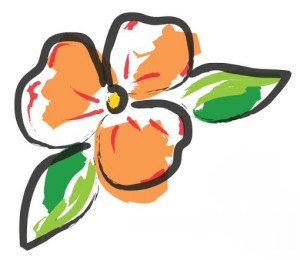 I didn’t know anything about Japanese irises when I moved into my house 28 years ago. Now, they are part of the family.
I didn’t know anything about Japanese irises when I moved into my house 28 years ago. Now, they are part of the family.
Their delicate purple flowers belie a hardy soul. They were the perfect plant for a budding gardener with more garden and house on her hands than she could handle!
The irises grew next to the house, in the front yard and en masse on a small hillside. Every year they provided us with dozens of exquisite blooms and asked for nothing in return
.
The irises have been woven into our lives. My husband loves them as much as I do. When we had our daughters, tw ins,
ins,
they too were drawn to them. Catherine and Elizabeth played in their leaves and blossoms as soon as they could walk. At age two, the flowers towered over them.
Although they are not native, I couldn’t resist providing them with a special place in my garden. Over the years, however, we lost many of them. The big batch by the hillside got overtaken by weeds. Ones by the house failed to thrive. The stock was dwindling but we still had one healthy clump.
The girls went off to college and we decided to create a new garden. I wanted to divide the remaining irises to add some to the new garden. Instead, my efforts took them to the very brink.
I had the irises in the front yard dug up. It was a huge overgrown clump interwoven with weeds. It was divided in two. They were still too big and overgrown for me to handle. I was in over my head. Winter was fast approaching. I didn’t have holes for them. I panicked.
Since I didn’t think I could divide the rhizomes myself, I put one batch in a wheelbarrow in the garage and the other against the house, trying to tuck it in for winter. It was not a gardening moment of which I am proud. My only hope was that those hardy irises would hang in there!
When spring broke, my husband not quite nonchalantly asked me if the irises were still alive and if so, when were we going to plant them. With false bravado, I assured him that there were alive. Secretly I was delighted to have his help. I quickly whipped out the clump that was next to the house. He divided them (with an ax if I recall correctly) and I planted them. Having done much of the backbreaking work he was delighted that we were done.
It seemed cruel, but I had to break it to him. There were a “few” more that needed to be planted. He sighed, but with good spirits agreed to divide the rest. I ran to the garage and pulled out the massive wheelbarrow since I could not pick up the irises without it. An hour later we had more irises planted.
Two and half years later, we now have seven healthy clumps thriving in our front and back gardens. Irises are blooming with abandon again at our house!
(Epilogue. I am ready to start dividing again, but my husband
urges patience. I’m not sure if it is because he doesn’t think the plants need to be divided or he remembers the last time they wer e.)
e.)
Laura
Tips about Japanese irises
Conditions: Regular garden conditions
Sun: Full sun
Soil: Heavy, rich soil with organic matter. pH between 5-6.5
Moisture: They require ample moisture, especially right before blooming
Plant: Anytime from spring to fall (in hot areas, plant in cooler times)
How to plant: Plant rhizomes 1 to 3” deep, depending on the heft of the soil
Fertilizing: Generous application of a balanced fertilizer (12-12-12), in spring and before blooming
For more information about how to grow irises go to The Society for Japanese Irises at http://www.socji.org/sji_officersdirectors.html
Cutline:
Catherine, left, and Elizabeth stand in the Japanese irises.
